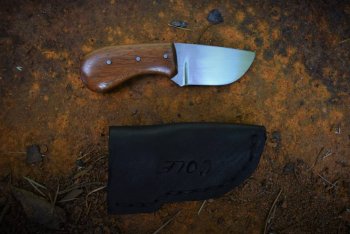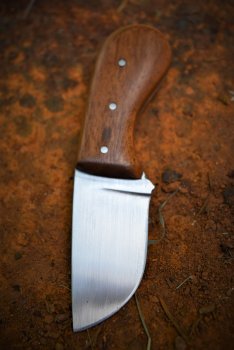Alden Cole
Well-Known Member
Hello all, just completed knife #13. This one has really bad edge deformation. Does anyone have any idea why that could be? Just carving wood I get some deformation. I think I got the burr off, maybe I sharpened to too fine an angle, or could my ht be bad? Any info is appreciated as I couldn't find anything online. By the way, the knife actually has some scratches on the blade, but the camera didn't pick 'em up.
Here are the specs.
Tiger wood
4.5 inches OAL
1080 1/8 inch thick
Flat grind, convex edge,
heat treated with mapp torch "forge", quenched in canola, tempered 400 2-2 hour sets.
Thanks in advance, you're critique always helps me improve!


Here are the specs.
Tiger wood
4.5 inches OAL
1080 1/8 inch thick
Flat grind, convex edge,
heat treated with mapp torch "forge", quenched in canola, tempered 400 2-2 hour sets.
Thanks in advance, you're critique always helps me improve!


